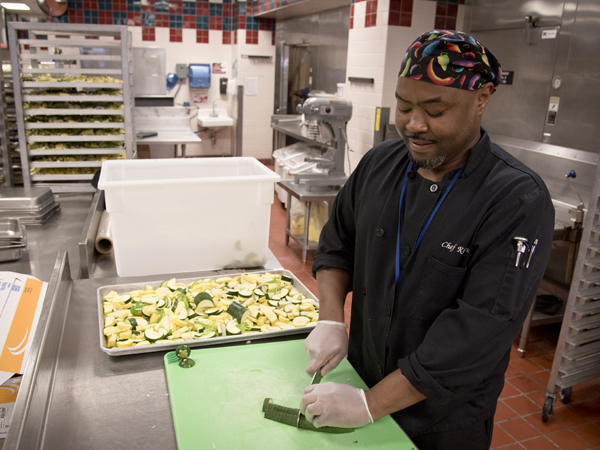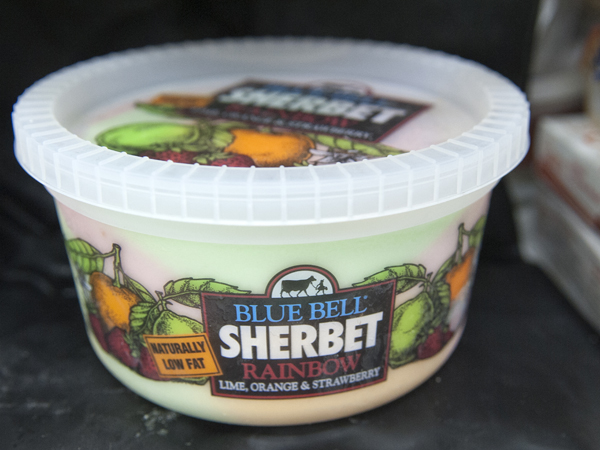Listeria bacteria? It’s bigger than Blue Bell

Published in News Stories on April 23, 2015
If you've got a half-eaten container of Blue Bell ice cream in your freezer, should you finish it off?
Throw it away, says Dr. Skip Nolan, director of the Division of Infectious Diseases at the University of Mississippi Medical Center.
There's a chance -- albeit small -- it contains the troublesome listeria monocytogenes bacteria that prompted a nationwide recall by Texas-based Blue Bell Creameries after listeria was found to have contaminated products made at several of its factories.
All Blue Bell selections, including ice cream, frozen yogurt, sherbet and single-serve cups, on Monday were swept from store shelves following the deaths of three people in Kansas and reports it has sickened a handful of people in other states, not including Mississippi.
Symptoms are mostly gastrointestinal and include fever, nausea, diarrhea, severe headaches and abdominal pain and cramps.
However, listeria cases have been around for a long time, Nolan said. In fact, the outbreak linked to Blue Bell began as long as five years ago, officials with the Centers for Disease Control and Prevention said Tuesday.
"There's a lot that people don't know about this," Nolan said of listeria bacteria.
For starters:
It's found just about everywhere. "Surveys show that if you culture produce in the grocery store, deli meat and other surfaces, it's pretty easy to find," Nolan said. "The same thing is true in your refrigerator. Everybody gets exposed to it, but only certain people get it."

All Blue Bell Creamery products, including sherbet, are part of an April 20 nationwide recall in the wake of Listeria bacteria contamination at some Blue Bell factories.
And, the average healthy person probably isn't going to get sick from listeria, even if they eat Blue Bell ice cream that contains it. "Those most at risk are pregnant women, people over 60, people who have problems with their immune systems, people who have had transplants, people with HIV or cancer," Nolan said. It can cause serious and sometimes fatal infections for those at risk.
Those groups account for at least 90 percent of reported listeria infections, the CDC says. "It's very prone to get into the bloodstream of immunocompromised people and can cause meningitis or encephalitis," Nolan said. "A fetus can be born extremely ill with listeria, or can die.
"It's possible to get extremely sick from it, but in otherwise healthy people, you usually don't see it," he said.

Nolan
So far as food poisoning, however, salmonella is the bigger villain, Nolan said. "Salmonella will sicken just about anybody. It's a bigger public health threat, and it's more transmissible from person to person. Listeria is just not generally transmitted from person to person.
"If you're healthy and have a choice between salmonella and listeria, you probably want listeria because it won't make you as sick as salmonella."
The CDC says listeria infections can be prevented by rinsing raw produce thoroughly before eating, cutting or cooking; scrubbing firm produce such as melons with a clean produce brush; drying produce with a clean cloth or paper towel; and separating uncooked meats and poultry from veggies, cooked foods and ready-to-cook foods.
Consuming raw milk and unpasteurized milk products are always a bad idea, Nolan said.

Taylor
Cathy Taylor, UMMC's assistant director of food and nutrition services, said food safety is foremost with her department. "We're all aware that we're in an environment with people who have compromised immune systems," she said.
Taylor, her department's managers, and a number of the employees are ServSafe certified by the National Restaurant Association. It's one of the nation's premier food safety certifications.
A number of protocols are in place in UMMC's cafeterias and kitchens to keep dangerous bacteria at bay, Taylor said. "In between tasks, we always sanitize, and we always hand wash. We stress hand washing, hand washing, hand washing."
Employees are instructed to change gloves between tasks, and to wash their hands before putting on the new pair of gloves. Cutting boards are color-coded so that various foods won't be mixed. For example, red is for raw meat, white is for ready-to-eat foods, and green is for fruits and vegetables.
"Normal food has bacteria in it, but when you heat it to the proper temperature, it kills the bacteria," Taylor said. "Hot foods have to be hot, and cold foods have to be cold."
Because listeria can grow in a refrigerator, the CDC says, make sure it is 40 degrees Fahrenheit or lower, and that your freezer is 0 degrees or lower. Clean all refrigerator spills promptly, and ditto for inside walls and shelves, with hot water and liquid soap.
And, take a fresh look at how long food hangs out in your refrigerator. For example, open packages of hot dogs should be thrown out after a week, and after two weeks for unopened packages.
Nolan doesn't care for sweets. But if he did, and a half-gallon of Blue Bell Moo-llennium Crunch bought a week ago was on his freezer shelf, would he eat it?
"Probably not, knowing what I know now," Nolan said.


